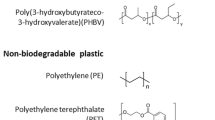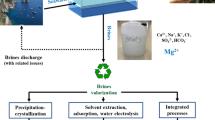Abstract
The acidification and warming of seawater have several impacts on marine organisms, including over microorganisms. The influence of acidification and warming of seawater on biofilms grown on API 5L steel surfaces was evaluated by sequencing the 16S ribosomal gene. For this, three microcosms were designed, the first simulating the natural marine environment (MCC), the second with a decrease in pH from 8.1 to 7.9, and an increase in temperature by 2 °C (MMS), and the third with pH in around 7.7 and an increase in temperature of 4 °C (MES). The results showed that MCC was dominated by the Gammaproteobacteria class, mainly members of the Alteromonadales Order. The second most abundant group was Alphaproteobacteria, with a predominance of Rhodobacterales and Oceanospirillales. In the MMS system there was a balance between representatives of the Gammaproteobacteria and Alphaproteobacteria classes. In MES there was an inversion in the representations of the most prevalent classes previously described in MCC. In this condition, there was a predominance of members of the Alphaproteobacteria Class, in contrast to the decrease in the abundance of Gammaproteobacteria members. These results suggest that possible future climate changes may influence the dynamics of the biofouling process in surface metals.


Similar content being viewed by others
References
Dlugokencky E, Tans P (2017) Trends in atmospheric carbon dioxide. National Oceanic & Atmospheric Administration, Earth System Research Laboratory. http://www.esrl.noaa.gov/gmd/ccgg/trends/global.html. Accessed 26 June 2020
Masson-Delmotte V, Zhai P, Pörtner HO, Roberts D, Skea J, Shukla PR, Pirani A, et al (2018) Global warming of 1.5°C: an IPCC special report on the impacts of global warming of 1.5°C above pre-industrial levels and related global greenhouse gas emission pathways, in the context of strengthening the global response to the threat of climate change. World Meteorological Organization, Geneva
Das S, Mangwani N (2015) Ocean acidification and marine microorganisms: responses and consequences. Oceanologia 59:349–361. https://doi.org/10.1016/j.oceano.2015.07.003
Sabine CL, Feely RA, Gruber N, Key RM, Lee K, Bullister JL, Wanninkhof R et al (2004) The oceanic sink for anthropogenic CO2. Science 305(5682):367–371
Bates NR, Astor YM, Church MJ, Currie K, Dore JE, González-Dávila M, Lorenzoni L et al (2014) A time-series view of changing ocean chemistry due to ocean uptake of anthropogenic CO2 and ocean acidification. Oceanography 27(1):126–141. https://doi.org/10.5670/oceanog.2014.16
Friedrich T, Timmermann A, Abe-Ouchi A, Bates NR, Chikamoto MO, Church MJ, Dore JE et al (2012) Detecting regional anthropogenic trends in ocean acidification against natural variability. Nat Clim Change 2:167–171
Paul C, Sommer U, Garzke J, Moustaka-Gouni M, Paul A, Matthiessen B (2016) Effects of increased CO2 concentration on nutrient limited coastal summer plankton depend on temperature. Limnol Oceanog 61:853–868. https://doi.org/10.1002/lno.10256
Piontek J, Lunau M, Händel N, Borchard C, Wurst M, Engel A (2010) Acidification increases microbial polysaccharide degradation in the ocean. Biogeosciences 7:1615–1624
Pansch C, Nasrolahi A, Appelhans YS, Wahl M (2012) Impacts of ocean warming and acidification on the larval development of the barnacle Amphibalanus improvisus. J Exp Mar Biol Ecol 420–421:48–55. https://doi.org/10.1016/j.jembe.2012.03.023
Kushmaro A, Banin E, Loya Y, Stackebrandt E, Rosenberg E (2001) Vibrio shiloi sp. nov., the causative agent of bleaching of the coral Oculina patagonica. Int J Syst Evol Microbiol 51:1383–1388. https://doi.org/10.1099/00207713-51-4-1383
Kimes NE, Grim CJ, Johnson WR, Hasan NA, Tall BD, Kothary MH, Kiss H et al (2012) Temperature regulation of virulence factors in the pathogen Vibrio coralliilyticus. Isme J 6:835–846. https://doi.org/10.1038/ismej.2011.154
Lindh MV, Riemann L, Baltar F, Romero-Oliva C, Salomon PS, Granéli E, Pinhassi J (2013) Consequences of increased temperature and acidification on bacterioplankton community composition during a mesocosm spring bloom in the Baltic Sea. Environ Microbiol Rep 5(2):252–262. https://doi.org/10.1111/1758-2229.12009
von Scheibner M, Dörge P, Biermann A, Sommer U, Hoppe HG, Jürgens K (2014) Impact of warming on phyto-bacterioplankton coupling and bacterial community composition in experimental mesocosms. Environ Microbiol 16(3):718–733. https://doi.org/10.1111/1462-2920.12195
Procópio L (2019) The role of biofilms in the corrosion of steel in marine environments. World J Microbiol Biotechnol 35(5):73. https://doi.org/10.1007/s11274-019-2647-4
Capão A, Moreira-Filho P, Garcia M, Bitati S, Procópio L (2020) Marine bacterial community analysis on 316L stainless steel coupons by Illumina MiSeq sequencing. Biotechnol Lett 42(8):1431–1448. https://doi.org/10.1007/s10529-020-02927-9
Enning D, Garrelfs J (2014) Corrosion of iron by sulfate-reducing bacteria: new views of an old problem. Appl Environ Microbiol 80:1226–1236. https://doi.org/10.1128/AEM.02848-13
Enning D, Venzlaff H, Garrelfs J, Dinh HT, Meyer V, Mayrhofer K, Hassel AW, Stratmann M, Widdel F (2012) Marine sulfate-reducing bacteria cause serious corrosion of iron under electroconductive biogenic mineral crust. Environ Microbiol 14(7):1772–1787. https://doi.org/10.1111/j.1462-2920.2012.02778.x
Kato S (2016) Microbial extracellular electron transfer and its relevance to iron corrosion. Microb Biotechnol 9(2):141–148. https://doi.org/10.1111/1751-7915.12340
Emerson D (2019) The role of iron-oxidizing bacteris in biocorrosion: a review. Biofoouling 34:989–1000. https://doi.org/10.1080/08927014.2018.1526281
Dobretsov S (2010) Marine biofilms. In: Thomason JC (ed) Durr S. Biofouling, Wiley-Blackwell, pp 123–136
Dobretsov S, Coutinho R, Rittschof D, Salta M, Ragazzola F, Hellio C (2019) The oceans are changing: impact of ocean warming and acidification on biofouling communities. Biofouling 35(5):585–595. https://doi.org/10.1080/08927014.2019.1624727
Procópio L (2020) The era of “omics” technologies in the study of microbiologically influenced corrosion. Biotechnol Lett 42(3):341–356. https://doi.org/10.1007/s10529-019-02789-w
Lau SCK, Thiyagarajan V, Cheung SCK, Qian P (2005) Roles of bacterial community composition in biofilms as a mediator for larval settlement of three marine invertebrates. Aquat Microb Ecol 38:41–51. https://doi.org/10.3354/ame038041
Whalan S, Webster NS (2014) Sponge larval settlement cues: the role of microbial biofilms in a warming ocean. Sci Rep. https://doi.org/10.1038/srep04072
Patil SA, Harnisch F, Koch C, Hubschmann T, Fetzer I, Carmona-Martınez AA, M€uller S, Schruoder U, (2011) Electroactive mixed culture derived biofilms in microbial bioelectrochemical systems: the role of pH on biofilm formation, performance and composition. Bioresour Technol 102:9683–9690. https://doi.org/10.1016/j.biortech.2011.07.087
Peck LS, Clark MS, Power D, Reis J, Batista FM, Harper EM (2015) Acidification effects on biofouling communities: winners and losers. Glob Change Biol 21:1907–1913. https://doi.org/10.1111/gcb.12841
Hoegh-Guldberg O, Mumby PJ, Hooten AJ, Steneck RS, Greenfield P, Gomez E, Harvell CD et al (2007) Coral reefs under rapid climate change and ocean acidification. Science 318:1737–1742. https://doi.org/10.1126/science.1152509
Witt V, Wild C, Anthony KR, Diaz-Pulido G, Uthicke S (2011) Effects of ocean acidification on microbial community composition of, and oxygen fluxes through, biofilms from the Great Barrier Reef. Environ Microbiol 13(11):2976–2989. https://doi.org/10.1111/j.1462-2920.2011.02571.x
Okazaki RR, Towle EK, van Hooidonk R, Mor C, Winter RN, Piggot AM, Cunning R et al (2017) Species-specific responses to climate change and community composition determine future calcification rates of Florida Keys reefs. Glob Chang Biol 23:1023–1035. https://doi.org/10.1111/gcb.13481
Kerfahi D, Harvey BP, Agostini S, Kon K, Huang R, Adams JM, Hall-Spencer JM (2020) Responses of intertidal bacterial biofilm communities to increasing pCO2. Mar Biotechnolr. https://doi.org/10.1007/s10126-020-09958-3
Nelson KS, Baltar F, Lamare MD, Morales SE (2020) Ocean acidification affects microbial community and invertebrate settlement on biofilms. Sci Rep 10(1):3274. https://doi.org/10.1038/s41598-020-60023-4
de Brito LV, Coutinho R, Cavalcanti EH, Benchimol M (2007) The influence of macrofouling on the corrosion behaviour of API 5L X65 carbon steel. Biofouling 23(3–4):193–201. https://doi.org/10.1080/08927010701258966
Procópio L (2020) Changes in microbial community in the presence of oil and chemical dispersant and their effects on the corrosion of API 5L steel coupons in a marine-simulated microcosm. Appl Microbiol Biotechnol 104(14):6397–6411. https://doi.org/10.1007/s00253-020-10688-8
Wang Y, Qian PY (2009) Conservative fragments in bacterial 16S rRNA genes and primer design for 16S ribosomal DNA amplicons in metagenomic studies. PLoS ONE 4(10):e7401. https://doi.org/10.1371/journal.pone.0007401
McDonald D, Price MN, Goodrich J, Nawrocki EP, DeSantis TZ, Probst A, Andersen GL, Knight R, Hugenholtz P (2012) An improved Greengenes taxonomy with explicit ranks for ecological and evolutionary analyses of bacteria and archaea. ISME J 6(3):610–618. https://doi.org/10.1038/ismej.2011.139
Hammer Ø, Harper DAT, Ryan PD (2001) PAST: Paleontological statistics software package for education and data analysis. Palae Electro 4(1):1–9
McMurdie PJ, Holmes S (2013) phyloseq: an R package for reproducible interactive analysis and graphics of microbiome census data. PLoS ONE 8(4):e61217. https://doi.org/10.1371/journal.pone.0061217
Oksanen J, Guillaume BF, Friendly M, Kindt R, Legendre P, McGlinn D, Minchin PR, et al. (2019) vegan: Community Ecology Package. R package version 2.5-6.
Tang Y, Horikoshi M, Li W (2016) ggfortify: Unified Interface to Visualize Statistical Results of Popular R Packages. The R Journal 8:474–485
R Core Team (2014) R: A language and environment for statistical computing. R Foundation for Statistical Computing, Vienna
York A (2018) Marine biogeochemical cycles in a changing world. Nat Rev Microbiol 16:259. https://doi.org/10.1038/nrmicro.2018.40
Jansson JK, Hofmockel KS (2020) Soil microbiomes and climate change. Nat Rev Microbiol 18:35–46. https://doi.org/10.1038/s41579-019-0265-7
Hurd CL, Lenton A, Tilbrook B, Boyd PW (2017) Current understanding and challenges for oceans in a higher-CO2 world. Nat Clim Change 8:686–694. https://doi.org/10.1038/s41558-018-0211-0
Hutchins DA, Fu F (2017) Microorganisms and ocean global change. Nat Microbiol 2:17058. https://doi.org/10.1038/nmicrobiol.2017.58
Hare CE, Leblanc K, DiTullio GR, Kudela RM, Zhang Y, Lee PA, Riseman S, Hutchins DA (2007) Consequences of increased temperature and CO2 for phytoplankton community structure in the Bering Sea. Mar Ecol Prog Ser 352:9–16. https://doi.org/10.3354/meps07182
Thomas MK, Kremer CT, Klausmeier CA, Litchman E (2012) A global pattern of thermal adaptation in marine phytoplankton. Science 338(6110):1085–1088. https://doi.org/10.1126/science.1224836
Tatters AO, Roleda MY, Schnetzer A, Fu F, Hurd CL, Boyd PW, Caron DA, Lie AA, Hoffmann LJ, Hutchins DA (2013) Short- and long-term conditioning of a temperate marine diatom community to acidification and warming. Philos Trans R Soc Lond B Biol Sci 368(1627):20120437. https://doi.org/10.1098/rstb.2012.0437
Kerfahi D, Harvey BP, Agostini S, Kon K, Huang R, Adams JM, Hall-Spencer J (2020) Responses of Intertidal Bacterial Biofilm Communities to Increasing pCO2. Mar Biotechnol 22(6):727–738. https://doi.org/10.1007/s10126-020-09958-3
IPCC (2014) Climate change 2014. In: Pachauri RK, Meyer LA (ed) Synthesis report. Contribution of working groups I, II and III to the fifth assessment report of the intergovernmental panel on climate change, Geneva, p 151
Lidbury I, Johnson V, Hall-Spencer JM, Munn CB, Cunliffe M (2012) Community-level response of coastal microbial biofilms to ocean acidification in a natural carbon dioxide vent ecosystem. Mar Pollut Bull 64(5):1063–1066. https://doi.org/10.1016/j.marpolbul.2012.02.011
Taylor JD, Ellis R, Milazzo M, Hall-Spencer JM, Cunliffe M (2014) Intertidal epilithic bacteria diversity changes along a naturally occurring carbon dioxide and pH gradient. FEMS Microbiol Ecol 89:670–678
Currie AR, Tait K, Parry H, de Francisco-Mora B, Hicks N, Osborn AM, Widdicombe S, Stahl H (2017) Marine microbial gene abundance and community composition in response to ocean acidification and elevated temperature in two contrasting coastal marine sediments. Front Microbiol 8:1599. https://doi.org/10.3389/fmicb.2017.01599
Smale DA, Taylor JD, Coombs SH, Moore G, Cunliffe M (2017) Community responses to seawater warming are conserved across diverse biological groupings and taxonomic resolutions. Proc Biol Sci 284(1862):20170534. https://doi.org/10.1098/rspb.2017.0534
Russell BD, Connell SD, Findlay HS, Tait K, Widdicombe S, Mieszkowska N (2013) Ocean acidification and rising temperatures may increase biofilm primary productivity but decrease grazer consumption. Philos Trans R Soc Lond B Biol Sci 368(1627):20120438. https://doi.org/10.1098/rstb.2012.0438
Krause E, Wichels A, Giménez L, Lunau M, Schilhabel MB, Gerdts G (2012) Small changes in pH have direct effects on marine bacterial community composition: a microcosm approach. PLoS ONE 7(10):e47035. https://doi.org/10.1371/journal.pone.0047035
Hassenrück C, Fink A, Lichtschlag A, Tegetmeyer HE, de Beer D, Ramette A (2016) Quantification of the effects of ocean acidification on sediment microbial communities in the environment: the importance of ecosystem approaches. FEMS Microbiol Ecol 92(5):fiw27. https://doi.org/10.1093/femsec/fiw027
Meron D, Rodolfo-Metalpa R, Cunning R, Baker AC, Fine M, Banin E (2012) Changes in coral microbial communities in response to a natural pH gradient. ISME J 6(9):1775–1785. https://doi.org/10.1038/ismej.2012.19
Author information
Authors and Affiliations
Corresponding author
Ethics declarations
Conflict of interest
There is no conflict of interest declared.
Additional information
Publisher's Note
Springer Nature remains neutral with regard to jurisdictional claims in published maps and institutional affiliations.
Supplementary Information
Below is the link to the electronic supplementary material.
Rights and permissions
About this article
Cite this article
Lamim, V.B., Procópio, L. Influence of Acidification and Warming of Seawater on Biofouling by Bacteria Grown over API 5L Steel. Indian J Microbiol 61, 151–159 (2021). https://doi.org/10.1007/s12088-021-00925-7
Received:
Accepted:
Published:
Issue Date:
DOI: https://doi.org/10.1007/s12088-021-00925-7




